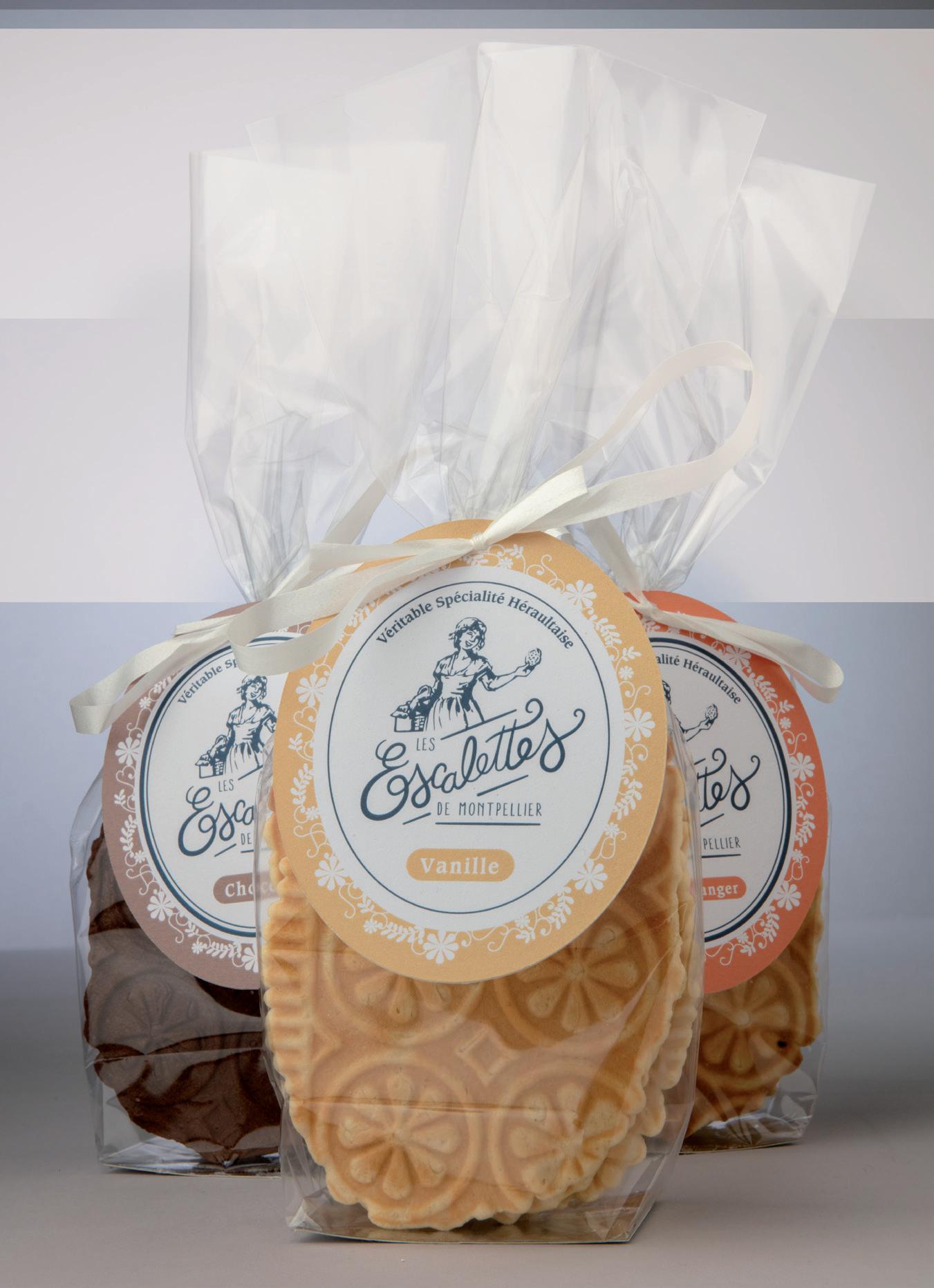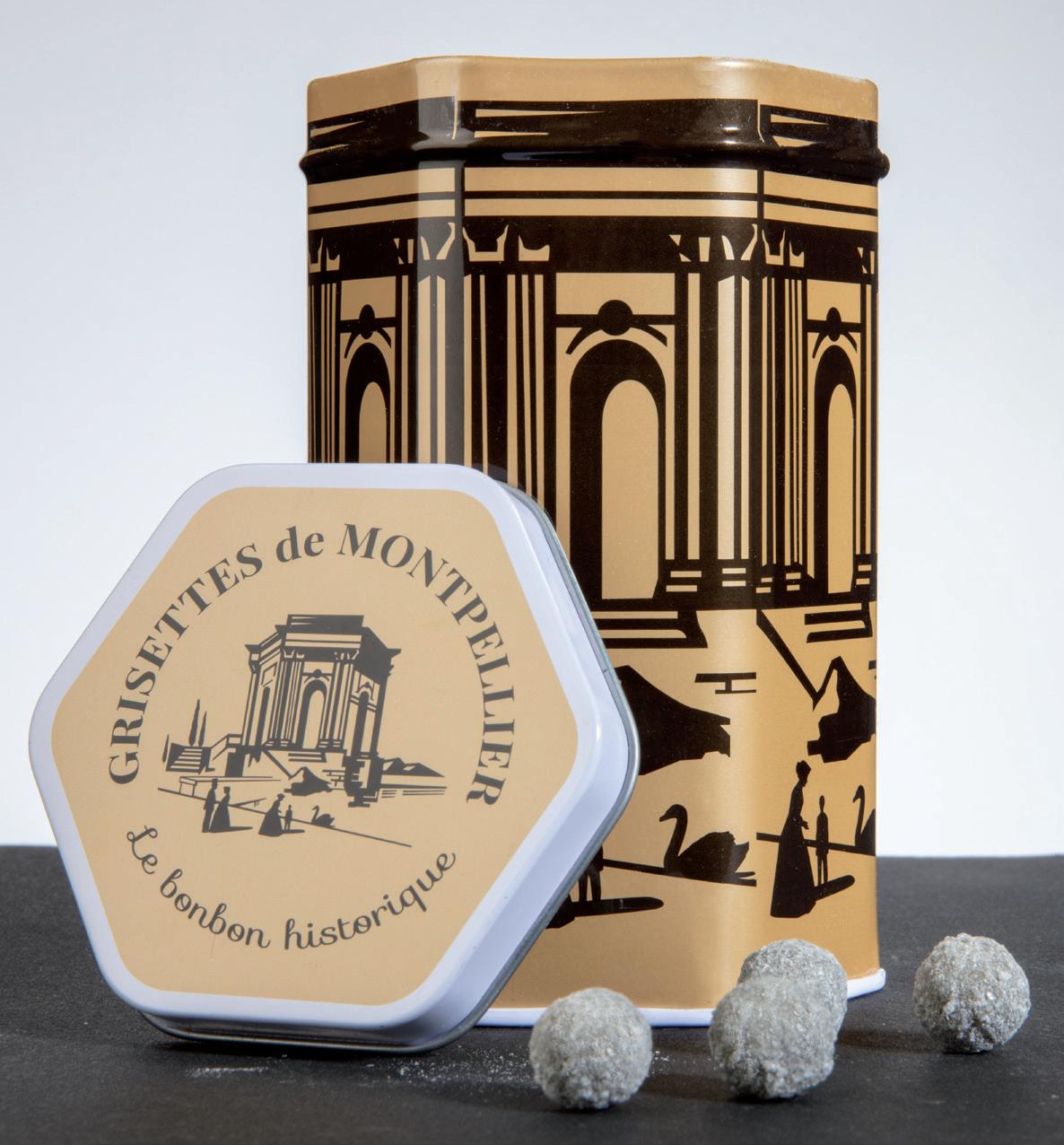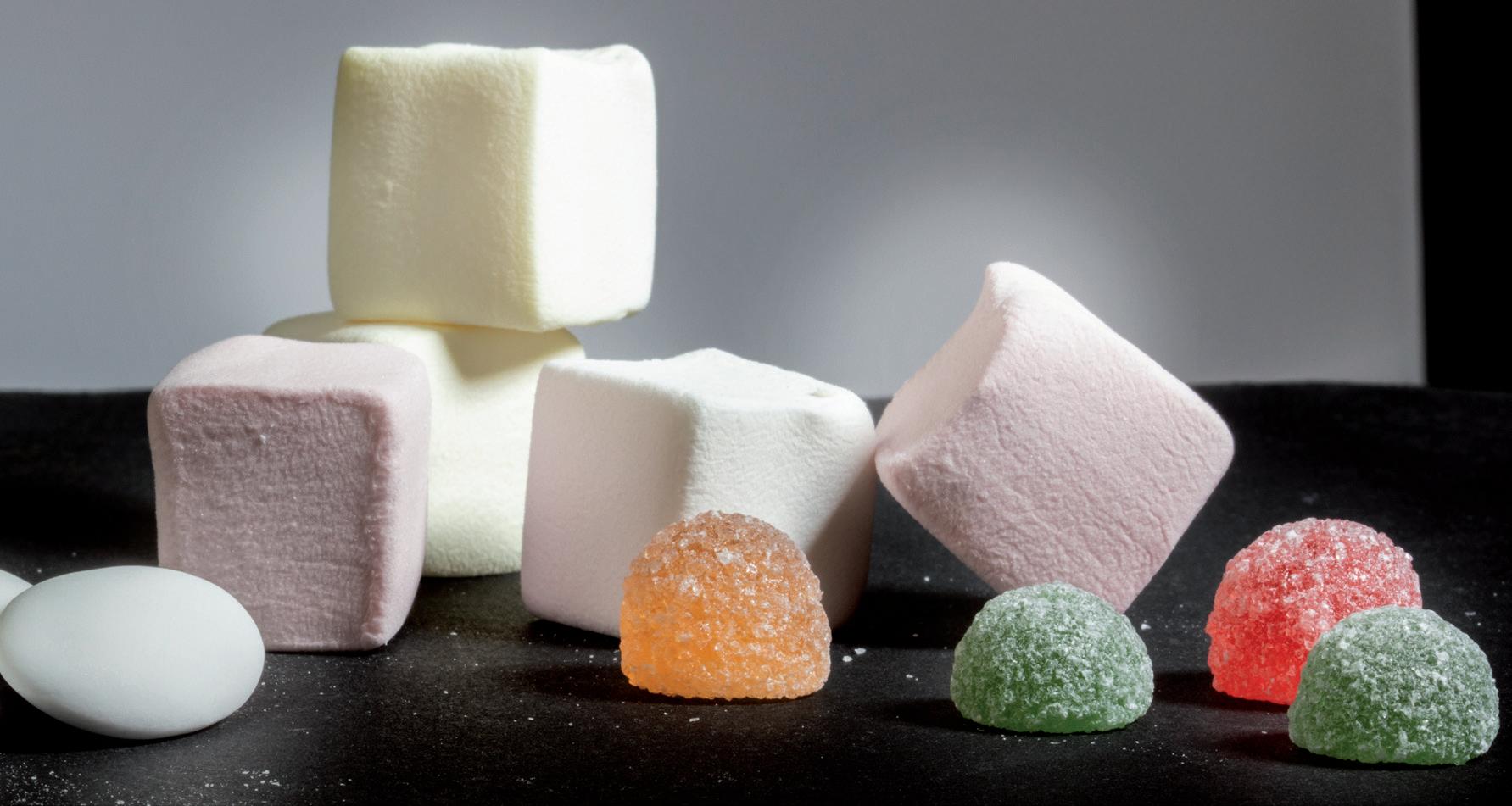
5 minute read
Gourmandises languedociennes
Coups de cœur
gourmandises languedociennes...
Escallettes, vous connaissez ? L'escalette c'est le nom donnée à la gaufre languedocienne, un biscuit délicatement parfumé, cuit dans un moule de fonte sur le feu. En Occitan, "escaleta" signifie "gaufre sèche", un plaisir gourmand qui a traversé les siècles, une recette de plus de 700 ans ! Un délicat retour aux sources et à l'authenticité, un témoignage du passé, une madeleine de Proust pour les Montpelliérains, un renvoi vers l'enfance, aux parfums de cuisine des grands-mères. Comme Mamie Alix, à Saint-Saturnin de Lucian, le village d'enfance d'Adrien Priu, véritable source d’inspiration. Elle leur a conté, avec Perrine Guillem, à mainte reprise la vie d’antan, le travail de la vigne, les longues soirées d’hiver à tourner le fer au coin de la cheminée ou encore à faire sauter les châtaignes. Elle leur a transmis son savoir-être et son savoir-faire. Véritable force de la nature, ce personnage haut en couleur, raffiné et méticuleux les suit depuis leurs premiers pas. Pour Adrien, l’escalette est un biscuit de plaisir à partager en famille au cours des fêtes de fin d’année, consommé par tradition en fin de repas avec un petit verre de Carthagène ou de vin blanc. Leur amour pour la cuisine ancestrale, de nos grands-mères et arrières-grands-mères les pousse à remettre un coup de poignet, à allumer le feu pour pouvoir sentir à nouveau le doux parfum de la gaufre chaude. Ils ont ainsi développé plusieurs recettes : fleur d'oranger, anis, citron, vanille, chocolat. Des ingrédients simples et bons, une fabrication artisanale, sans additifs ni conservateurs, Adrien Priu et Perrine Guillem nous régalent encore et encore. Au nom du patrimoine français du biscuit, merci ! Do you know the Escallettes? Escalette is the name given to the Languedoc waffle, a delicately flavoured biscuit, cooked in a cast iron mould on the fire. In Occitan, "escaleta" means "dry waffle", a scrumptious pleasure that has crossed the centuries, and a recipe of more than 700 years old! It’s a delicate return to the source and authenticity, a testimony of the past, a madeleine of Proust for the Montpellierans, a return towards childhood with the aromas of grandmothers' cooking. Like Mamie Alix, in Saint-Saturnin de Lucian, Adrien Priu's childhood village, a true source of inspiration. With Perrine Guillem, she told them many times the life of yesteryear, the work of the vineyard, the long winter evenings turning the iron by the fireplace or sautéing the chestnuts. She has passed on to them her way to be and her know-how. A true force of nature, this colourful, refined and meticulous character has followed them since their first steps. For Adrien, the Escalette is a biscuit of pleasure to share with the family during the end of year celebrations, traditionally eaten at the end of the meal with a small glass of Cartagena or white wine. Their love for the ancestral cooking of our grandmothers and great-grandmothers pushes them to give it another round, and light the fire to be able to smell again the soft aroma of the hot waffle. They have thus developed several recipes: orange blossom, aniseed, lemon, vanilla, chocolate. Simple and good ingredients, a traditional manufacturing, without additives or preservatives, Adrien Priu and Perrine Guillem treat us again and again. In the name of the French biscuit heritage, we thank you!



Au début du XXe siècle à Montpellier, pas moins de six confiseurs fabriquaient encore des confiseries à base de réglisse, des boules de gomme, des guimauves, des dragées. Ils étaient les derniers successeurs d'une corporation venue du Moyen-Âge où la confiserie voisinait avec la pharmacie, dans une ville où Jacques Cœur avait introduit les produits d'Orient. Au temps de Rabelais, les apothicaires qui n'étaient pas avares d'imagination, proposaient bon nombre de friandises que les étudiants offraient pour fêter leur thèse. Aujourd'hui, la Maison Auzier-Chabernac née d'une fusion en 1975 des confiseries Auzier (créée en 1923) et Chabernac (créée en 1890), perpétue la tradition de Montpellier avec son savoir-faire et des recettes traditionnelles de pâte vanillée, de pâte de réglisse au miel, guimauves et bien sûr les dragées. Jalousement gardées depuis trois générations, les confiseries sont réalisées dans le respect des recettes d'autrefois avec un soin tout particulier des matières premières. Un petit faible pour les "petits sujets" au mélange de réglisse et d'anis...
At the beginning of the 20th century in Montpellier, no less than six confectioners were still making licorice-based confectionery, gum balls, marshmallows and sugared almonds. They were the last successors of a corporation that came from the Middle Ages when confectionery was located next to pharmacies, in a city where Jacques Cœur had introduced some produce from the East. In the time of Rabelais, the apothecaries, who were not lacking imagination, provided a number of sweets that students offered to celebrate their thesis. Today, the Auzier-Chabernac House, born from a merger in 1975 between the Auzier (created in 1923) and Chabernac (created in 1890) confectioneries, perpetuates the Montpellier tradition with its know-how and traditional recipes of vanilla paste, honey liquorice paste, marshmallows and of course, the sugared almonds. Jealously guarded for three generations, the confections are made in the respect of the old recipes with a particular care with the raw materials. A soft spot for the "petits sujets" made with a mixture of liquorice and aniseed... Une autre création des apothicaires de Montpellier au Moyen-Âge : les Grisettes ! Toujours le réglisse et le miel pour vedettes dans une recette qui remonterait au XIIe siècle, Montpellier étant au carrefour des routes empruntées par les pèlerins de Saint-Jacques de Compostelle. Les commerçants du parvis de la basilique Notre-Dame des Tables s'en servaient alors comme monnaie d'échange. On retrouve la recette dans un manuscrit de pâtisserie de 1837 et le bonbon prend sa forme actuelle, petites billes grises sucrées et le nom de Grisette. Un nom porté par des légendes, laquelle est vraie ? Celle de la couleur du tissu porté par les pèlerins au XVIIe siècle, d'une jeune fille aux mœurs légères ou aux petites couturières du XIXe siècle ? À moins simplement de la couleur de ce petit bonbon saupoudré de cassonade pilée...
The Grisettes, another creation of the apothecaries of Montpellier in the Middle Ages! Liquorice and honey are still the stars of this recipe which dates back to the 12th century, Montpellier being at the crossroads of the routes taken by the pilgrims to Santiago de Compostela. The merchants in front of the Basilica of Notre-Dame des Tables used them as an exchange currency. We can find the recipe in a 1837 pastry manuscript with the sweet taking its current form, small sweet gray balls with the name of Grisette. A name carried by legends, but which one is true? The one about the colour of the cloth worn by pilgrims in the 17th century, the other about a prostitute or the little seamstresses of the 19th century? Or simply the colour of this little sweet sprinkled with crushed brown sugar...

